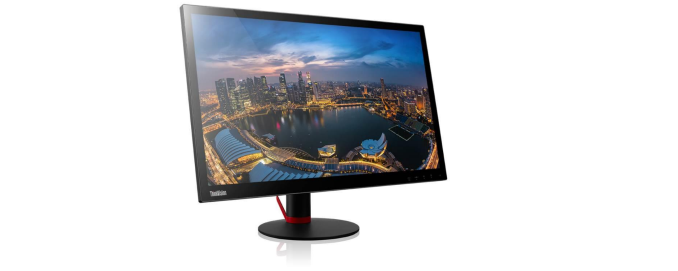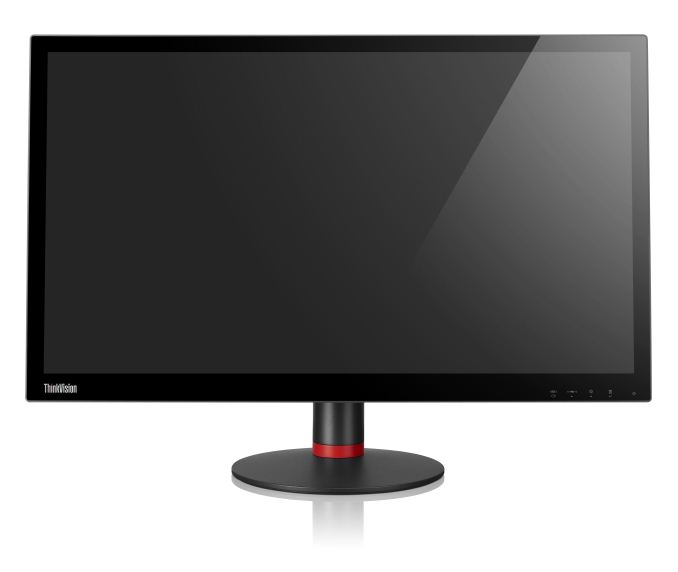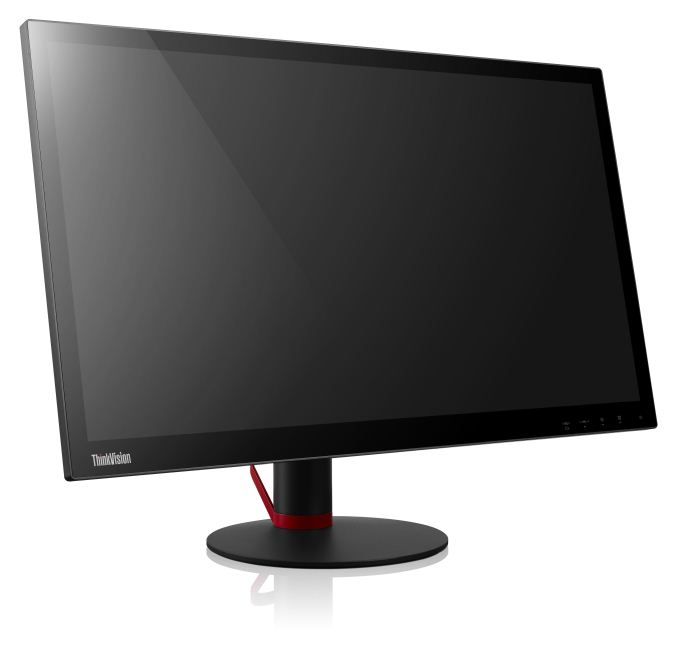Lenovo at CES 2014: ThinkVision Pro2840m, 28 inch 4K Professional Display
by Ian Cutress on January 6, 2014 12:26 PM EST
2014 looks like to be the year where 4K comes en mass to the market – or at least the high end and professional market to begin with. We might have to wait another year before the cheaper panels filter through the chain, but until that point, we can still all gaze in awe at what comes on the market. Lenovo is one of the manufacturers coming to the front with a 28” 4K (3840x2160) offering, although unlike the Dell version which is meant to be more mainstream than their higher end panels, Lenovo’s high end aims at the professional market with the 28 inch panel, the Pro2840m.
Along with the resolution, we have a 5ms response time, 72% color gamut, DisplayPort, mDP, HDMI and MHL connectivity, three USB 3.0 ports and dual 3W speakers. Lenovo is promoting a true 10-bit color, and streaming capabilities via other digital devices.
Backed by a three year warranty, the Pro2840m should be available in April for around $800.
Source: Lenovo












25 Comments
View All Comments
madwolfa - Monday, January 6, 2014 - link
"72% color gamut", "true 10-bit color", uhm, what? And 72% of sRGB, Adobe RGB?extide - Monday, January 6, 2014 - link
I can't wait until *I* can game at 4K at home. I think one more vid card gen will make it optimal (although 290x does a GREAT job, esp in CF). Plus, we need some cheap-ish 4k monitors to become available.madwolfa - Monday, January 6, 2014 - link
Well, I want NEC PA272W with G-Sync - not gonna happen though.baii9 - Monday, January 6, 2014 - link
I think 72% NTSC is typical when it is worded like this, so expect ~100% sSRGBDingoJunior - Friday, May 23, 2014 - link
I just got an email from Lenovo that this monitor is available. According to this document (http://shopap.lenovo.com/au/en/common/pdf/ThinkVis... it's 72% Adobe RGB.Ian Cutress - Monday, January 6, 2014 - link
It didn't specify, oddly enough.patrickjchase - Monday, January 6, 2014 - link
Gamut percentages for displays are typically specified relative to the NTSC RGB gamut unless otherwise stated. NTSC is slightly larger than AdobeRGB - NTSC has the same R and G primaries as Adobe, and a slightly more saturated B primary.The sRGB gamut is 72% of NTSC, so this monitor has an sRGB-sized gamut. It's impossible to tell if it actually *is* sRGB without knowing the primary chromaticities. Most "72%" monitors are fairly close to sRGB.
madwolfa - Monday, January 6, 2014 - link
Why do you need 10 bit color with sRGB gamut? Better gradients?patrickjchase - Monday, January 6, 2014 - link
Contrary to popular belief, the need (or lack thereof) for higher bit depth doesn't change much between sRGB and AdobeRGB.Gamut is a *volume* metric, while quantization is a function of step size along a single primary/axis. The difference in step size between two gamuts is roughly equal to the square root of the difference in volume (sRGB/ARGB have equivalent black/white points such that the gamut can only grow in 2 dimensions, hence square root rather than cube root).
IMO the most compelling reason for high bitdepth is for profiling - If you're implementing the profile on the host (i.e. in the video HW LUTs) and if your monitor is only 8 bits, then that remapping may cause "double steps". For example you might end up with a pair or mappings such as 10->10 and 11->12 in your LUT, which may lead to a visible transition. 10bpp fixes that by allowing host-side LUTs to more precisely specify the desired output levels.
The other way around the same issue is what NEC and Eizo do: Put the LUTs in the monitor. I use a pair of NECs (3090W and 301W, both with SpectraView) and quantization is a non-issue at 8bpp when their LUTs are properly configured.
DanNeely - Monday, January 6, 2014 - link
One one hand, $800 is less than I paid for my 1600p panel. On the other I'm kinda meh about only sRGB and would just as soon skip the built in MST kludge generation. On the gripping hand part of me wants to wait a bit to see if the rumors of 5k panels have any substance to them so I can upgrade to a 2:1 scaling mode.